Nazis Were Given ‘Safe Haven’ in U.S., Report Says

Dr. Josef Mengele in 1956, left. Arthur Rudolph, center, in 1990, was a rocket scientist for Nazi Germany and NASA. John Demjanjuk in 2006.
Pharisaism is Talmudism, Talmudism is Judaism, Judaism is Zionism, Zionism is Communism, Communism is Nazism, Nazism is the New World Order, the New World Order is the reign of the Antichrist, they are all the Six forms of ultimate Satanic evil.

Dr. Josef Mengele in 1956, left. Arthur Rudolph, center, in 1990, was a rocket scientist for Nazi Germany and NASA. John Demjanjuk in 2006.
The 600-page report, which the Justice Department has tried to keep secret for four years, provides new evidence about more than two dozen of the most notorious Nazi cases of the last three decades.
It describes the government’s posthumous pursuit of Dr. Josef Mengele, the so-called Angel of Death at Auschwitz, part of whose scalp was kept in a Justice Department official’s drawer; the vigilante killing of a former Waffen SS soldier in New Jersey; and the government’s mistaken identification of the Treblinka concentration camp guard known as Ivan the Terrible.
The report catalogs both the successes and failures of the band of lawyers, historians and investigators at the Justice Department’s Office of Special Investigations, which was created in 1979 to deport Nazis.
Perhaps the report’s most damning disclosures come in assessing the Central Intelligence Agency’s involvement with Nazi émigrés. Scholars and previous government reports had acknowledged the C.I.A.’s use of Nazis for postwar intelligence purposes. But this report goes further in documenting the level of American complicity and deception in such operations.
The Justice Department report, describing what it calls “the government’s collaboration with persecutors,” says that O.S.I investigators learned that some of the Nazis “were indeed knowingly granted entry” to the United States, even though government officials were aware of their pasts. “America, which prided itself on being a safe haven for the persecuted, became — in some small measure — a safe haven for persecutors as well,” it said.
The report also documents divisions within the government over the effort and the legal pitfalls in relying on testimony from Holocaust survivors that was decades old. The report also concluded that the number of Nazis who made it into the United States was almost certainly much smaller than 10,000, the figure widely cited by government officials.
The Justice Department has resisted making the report public since 2006. Under the threat of a lawsuit, it turned over a heavily redacted version last month to a private research group, the National Security Archive, but even then many of the most legally and diplomatically sensitive portions were omitted. A complete version was obtained by The New York Times.
The Justice Department said the report, the product of six years of work, was never formally completed and did not represent its official findings. It cited “numerous factual errors and omissions,” but declined to say what they were.
More than 300 Nazi persecutors have been deported, stripped of citizenship or blocked from entering the United States since the creation of the O.S.I., which was merged with another unit this year.
In chronicling the cases of Nazis who were aided by American intelligence officials, the report cites help that C.I.A. officials provided in 1954 to Otto Von Bolschwing, an associate of Adolf Eichmann who had helped develop the initial plans “to purge Germany of the Jews” and who later worked for the C.I.A. in the United States. In a chain of memos, C.I.A. officials debated what to do if Von Bolschwing were confronted about his past — whether to deny any Nazi affiliation or “explain it away on the basis of extenuating circumstances,” the report said.
The Justice Department, after learning of Von Bolschwing’s Nazi ties, sought to deport him in 1981. He died that year at age 72.
The report also examines the case of Arthur L. Rudolph, a Nazi scientist who ran the Mittelwerk munitions factory. He was brought to the United States in 1945 for his rocket-making expertise under Operation Paperclip, an American program that recruited scientists who had worked in Nazi Germany. (Rudolph has been honored by NASA and is credited as the father of the Saturn V rocket.)
The report cites a 1949 memo from the Justice Department’s No. 2 official urgingimmigration officers to let Rudolph back in the country after a stay in Mexico, saying that a failure to do so “would be to the detriment of the national interest.”
Justice Department investigators later found evidence that Rudolph was much more actively involved in exploiting slave laborers at Mittelwerk than he or American intelligence officials had acknowledged, the report says.
Some intelligence officials objected when the Justice Department sought to deport him in 1983, but the O.S.I. considered the deportation of someone of Rudolph’s prominence as an affirmation of “the depth of the government’s commitment to the Nazi prosecution program,” according to internal memos.
The Justice Department itself sometimes concealed what American officials knew about Nazis in this country, the report found.
In 1980, prosecutors filed a motion that “misstated the facts” in asserting that checks of C.I.A. and F.B.I. records revealed no information on the Nazi past of Tscherim Soobzokov, a former Waffen SS soldier. In fact, the report said, the Justice Department “knew that Soobzokov had advised the C.I.A. of his SS connection after he arrived in the United States.”
(After the case was dismissed, radical Jewish groups urged violence against Mr. Soobzokov, and he was killed in 1985 by a bomb at his home in Paterson, N.J. )
The secrecy surrounding the Justice Department’s handling of the report could pose a political dilemma for President Obama because of his pledge to run the most transparent administration in history. Mr. Obama chose the Justice Department to coordinate the opening of government records.
The Nazi-hunting report was the brainchild of Mark Richard, a senior Justice Department lawyer. In 1999, he persuaded Attorney General Janet Reno to begin a detailed look at what he saw as a critical piece of history, and he assigned a career prosecutor, Judith Feigin, to the job. After Mr. Richard edited the final version in 2006, he urged senior officials to make it public but was rebuffed, colleagues said.
When Mr. Richard became ill with cancer, he told a gathering of friends and family that the report’s publication was one of three things he hoped to see before he died, the colleagues said. He died in June 2009, and Attorney General Eric H. Holder Jr. spoke at his funeral.
“I spoke to him the week before he died, and he was still trying to get it released,” Ms. Feigin said. “It broke his heart.”
After Mr. Richard’s death, David Sobel, a Washington lawyer, and the National Security Archive sued for the report’s release under the Freedom of Information Act.
The Justice Department initially fought the lawsuit, but finally gave Mr. Sobel a partial copy — with more than 1,000 passages and references deleted based on exemptions for privacy and internal deliberations.
Laura Sweeney, a Justice Department spokeswoman, said the department is committed to transparency, and that redactions are made by experienced lawyers.
The full report disclosed that the Justice Department found “a smoking gun” in 1997 establishing with “definitive proof” that Switzerland had bought gold from the Nazis that had been taken from Jewish victims of the Holocaust. But these references are deleted, as are disputes between the Justice and State Departments over Switzerland’s culpability in the months leading up to a major report on the issue.
Another section describes as “a hideous failure” a series of meetings in 2000 that United States officials held with Latvian officials to pressure them to pursue suspected Nazis. That passage is also deleted.
So too are references to macabre but little-known bits of history, including how a director of the O.S.I. kept a piece of scalp that was thought to belong to Dr. Mengele in his desk in hopes that it would help establish whether he was dead.
The chapter on Dr. Mengele, one of the most notorious Nazis to escape prosecution, details the O.S.I.’s elaborate efforts in the mid-1980s to determine whether he had fled to the United States and might still be alive.
It describes how investigators used letters and diaries apparently written by Dr. Mengele in the 1970s, along with German dental records and Munich phone books, to follow his trail.
After the development of DNA tests, the piece of scalp, which had been turned over by the Brazilian authorities, proved to be a critical piece of evidence in establishing that Dr. Mengele had fled to Brazil and had died there in about 1979 without ever entering the United States, the report said. The edited report deletes references to Dr. Mengele’s scalp on privacy grounds.
Even documents that have long been available to the public are omitted, including court decisions, Congressional testimony and front-page newspaper articles from the 1970s.
A chapter on the O.S.I.’s most publicized failure — the case against John Demjanjuk, a retired American autoworker who was mistakenly identified as Treblinka’s Ivan the Terrible — deletes dozens of details, including part of a 1993 ruling by the United States Court of Appeals for the Sixth Circuit that raised ethics accusations against Justice Department officials.
That section also omits a passage disclosing that Latvian émigrés sympathetic to Mr. Demjanjuk secretly arranged for the O.S.I.’s trash to be delivered to them each day from 1985 to 1987. The émigrés rifled through the garbage to find classified documents that could help Mr. Demjanjuk, who is currently standing trial in Munich on separate war crimes charges.
Ms. Feigin said she was baffled by the Justice Department’s attempt to keep a central part of its history secret for so long. “It’s an amazing story,” she said, “that needs to be told.”
This article has been revised to reflect the following correction:
Correction: November 14, 2010
An earlier version misspelled the given name of Adolf Eichmann as Adolph.
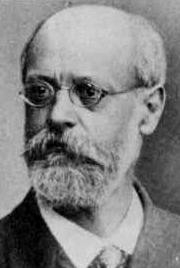 IntroductionIn 1880, the German Social Democratic Party supported the call of its Belgian comrades, to call an international socialist congress in 1881. The little town of Chur was chosen and the Belgian socialists, the French Parti Ouvrier, the German social democracy, and the Swiss social democracy, participated in the preparations for the congress which would lead to the founding of the Socialist International. Unlike the First, the Socialist International was made up of political parties with properly elected leaderships, political programs and membership bases in each country. The national sections of the International built trade unions, contested elections, and were deeply involved in the life of the working class in each country. The outbreak of the Great War in 1914 and the national and revolutionary crises which the War engendered however, threw the International into crisis. A group of Social-Democrats, minorities within their own parties, met at Zimmerwald in 1915 to try to work out a joint platform of opposition to the slaughter taking place around them. The Zimmerwald Conference failed to unite all the Social Democrats or end the War, but did bring together a Left wing which supported the Russian Revolution and laid the basis for the Third (Communist) International.
|
Formation of the InternationalOctober 1881 (Chur) Founding Conference of the Second International. Delegates included: Wilhelm Liebknecht (Germany); McGuire, General Secretary of the United Brotherhood of Carpenters (Socialist Labor Party of North America); Louis Bertrand (The Belgian Socialist Party); J. Joffrin and Benoît Malon (The French Parti Ouvrier); J. P. Becker and Solari for French-speaking Switzerland, and Conzetti, Herter, Lenbert, and Schwartz for German-speaking Switzerland; Rachow (German communist, London); Varinski and Limonowski for various Polish socialist groups, and Paul Axelrod (Russia), Ferenezi Siula (Budapest). The Conference did not succeed in bringing the parties into a new International, but called for the drafting of a joint socialist manifesto to be submitted to the next international congress, to be organised by the Parti Ouvrier in Paris in 1886. 1886 (Paris) International Labour Conference, showed progress towards a new International with socialist parties in Italy, Spain, Holland, Belgium, Great Britain, the Scandinavian countries, France, the United States, etc. July 1889 (Paris) International Socialist Congress, attended by delegates from 20 countries, founded the new Socialist International, formally adopting the principles of the International Workingmen's Association founded in London in 1864. May Day was declared as an international working-class holiday. International Socialist Congresses 2. 1891 (Brussels) 3. 1893 (Zürich) Engels was elected honorary president of International Socialist Congress, but died in 1895. The Congress established the International Metalworkers Federation, uniting metalworkers across the world to this day. 4. 1896 (London) affirmed right of nations to self-determination and opposition to colonialism. 5. September 1900 (Paris) Established a standing International Socialist Bureau composed of representatives of the socialist parties of all countries, its secretariat to be in Brussels. At this Congress, there was a split within the 28-strong Russian delegation. Lenin cast his vote for Plekhanov as the Russian delegate to the International, against Krichevsky, one of the editors of Rabocheye Dyelo. In 1903, the Russian party split between Bolsheviks and Mensheviks. 6. 1904 (Amsterdam) The Industrial Workers of the World (IWW) was founded in Chicago in June 1905, and over the next few years, the Social Democrats were active in a struggle against Anarcho-Syndicalism within the IWW. See the Report of the Australian Socialist League to the International Socialist Congress at Amsterdam, and 7. August 1907 (Stuttgart), there were 884 delegates from 25 nations including Argentina, Australia, Austria, Belgium, Bulgaria, Denmark, England, Germany, Italy, India, Japan, Norway, Poland, Russia, the USA and one delegate from South Africa. The First International Conference of Socialist Women was held just prior to the opening of the Congress
The Fourth convention of the IWW in 1908 resulted in a split between “political actionists”, led by Daniel DeLeon of the SLP, and “direct actionists”, led by Vincent St. John and J.H. Walsh. DeLeon set up a rival “Detroit” IWW in opposition to the “Chicago” IWW who were opposed to participation in Parliament. 8. August 1910 (Copenhagen). Second International Conference of Socialist Women held prior to opening of Congress, set International Women's Day for March 8 every year. November 1912 Extraordinary Congress (Basel) - see Manifesto. The final session of the International Socialist Bureau was held at Brussels on July 29, 1914 and “resolved unanimously that it shall be the duty of the workers of all nations concerned not only to continue but to further intensify their demonstrations against the war, for peace, and for the settlement of the Austro-Serbian conflict by international arbitration, ...” Imperialism and Arbitration Courts, Report by Hugo Haase to the International Socialist Congress of Vienna, August 1914. 1915 September (Zimmerwald, near Berne, Switzerland) organised opposition to the War. 1916 April (Kienthal) follow-up to Zimmerwald Conference. 1917 July - August (Stockholm) did not convene due to delegates being prevented from attending. Final meeting of Zimmerwald group at Stockholm The Social Democratic Party of GermanyThe defeat of the Paris Commune in 1871 plunged Europe into a period of reaction, leading to the disintegration of the First International by 1873. The reconstruction of the international socialist movement began in Gotha in 1875. The German Socialists were the founding and most powerful section of Social-Democracy throughout the period of its existence. The Socialist Workers' Party of Germany was founded in May 1875 at Gotha, uniting Liebknecht and Bebel's Social-Democratic Workers' Party and the Lassallean General German Workers' Union. See Marx's Critique of the Gotha Programme and Engels' 1891 Foreword to the Critique. |
| Wilhelm Liebknecht |
| August Bebel |
| Eduard Bernstein |
| Karl Kautsky |
The Spartacists Franz Mehring |
| |
| Rosa Luxemburg was a leader of both the German and Polish Social Democrats, an electrifying speaker who always stood on the left wing of social democracy. She was critical of Lenin's centralised methods of organisation (See Russian Social-democracy) and was a foremost advocate of the mass strike as opposed to parliamentary activity (See The Mass Strike). She spent the War inside prison, and was released only in time to take her place at the head of the German Revolution and to be arrested by her erstwhile Social-Democratic comrades, and murdered in January 1919. |
| With Rosa Luxemburg, Liebknecht was leader of the “International Group” and later founded the Spartacist League and was the only Reichstag Deputy to oppose war credits in the Reichstag in 1914. Drafted during the war, he was imprisoned in May 1916 for anti-war activity. Released in November 1918, Liebknecht was a leader of the failed Berlin uprising in January 1919 and murdered on January 15th 1919, along with his life-long comrade Rosa Luxemburg. |
Other Social-democratic Parties in Europe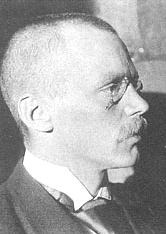 Herman Gorter (1864-1927) Dutch poet who opposed the pro-War stance of the Dutch Social-Democrats and later became a "left-wing communist", conducting a polemic against Lenin's book of that name. See his Open Letter to Lenin. |
 Anton Pannekoek (1873-1960) The Dutch astronomer Anton Pannekoek was active in the German Social Democratic Party while living in Germany before the War and contributed to Die Neue Zeit. The leader of the Social Democrats in the Netherlands, after the Russian Revolution, Pannekoek stayed aloof from both the Comintern and the Socialist Parties, taking a syndicalist direction. See Party and Class. |
The French Parti Ouvrier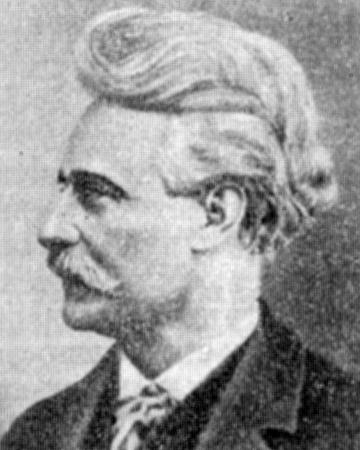 Paul Lafargue After the fall of the Paris Commune Paul and Laura fled to Spain but later settled in London. Lafargue was an influential speaker and writer, including works on ethical aspects of socialism. The couple commited suicide together in 1911. See Paul Lafargue Archive. |
| Jules Guesde 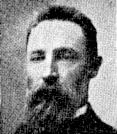 In December 1920 the French Socialist Party joined the Comintern. Garbriel Deville: one of the theoreticians of the French Workers Party (POF) of Guesde and as such introduced Marxism into France. |
Swedish Social-Democracy August Palm Hjalmar Branting |
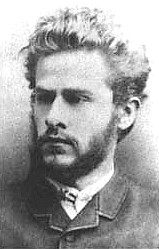 Poland Leo Jogiches |
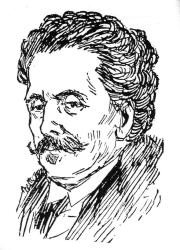 Italian Socialist Party Antonio Labriola (1843-1904) 
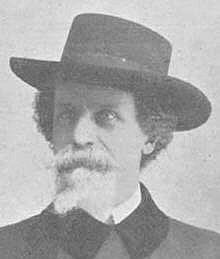 Enrico Ferri (1856-1929), criminologist, later joined the Fascists. |
Russian Social-DemocracyThe Russian Social Democratic Labour Party grew out of the Emancipation of Labour Group founded in 1878 by Plekhanov, Vera Zasluich, Pavel Axelrod and others. The Russian Social Democratic Labour PartyThe R.S.D.L.P. was founded in 1901, but at its Second Congress into two factions known as the “Bolsheviks” and the “Mensheviks”. These two factions still operated as parts of a single party as late as 1912. G V Plekhanov Plekhanov was the “father of Russian Marxism”, and up to 1903 Lenin and Plekhanov were allies in the struggle against Bernstein's “evolutionary socialism.” Even after Lenin split with Plekhanov, Plekhanov was held in high regard. However, he did not foresee the possibility of the working class seizing power without Russia first passing through a period of democratic capitalism, and opposed the October Revolution. |
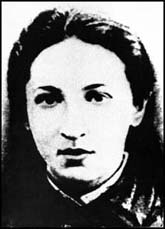 Vera Zasulich (1851-1919) Joined the Narodniks as a youth, but after emigrating in 1880 joined with Plekhanov in the Emancipation of Labour Group. Zasulich translated a number of Marx's works into Russian and with Lenin and Plekhanov as an editor of Iskra. Zasulich was a Menshevik from 1903. Pavel Axelrod (1850-1928) Influenced by the writings of Bakunin, in 1877 he joined Land and Liberty. When this group established the terrorist Narodnya Volya, he joined instead with Plekhanov in the Emancipation of Labour Group. Axelrod was a Menshevik from 1903. 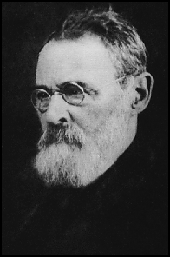 |
| V I Lenin Lenin's Bolshevik faction was the centre of opposition to the War at the Zimmerwald Conference. The February Revolution, which brought a social-democratic Provisional Government to power, which continued Russia's participation in the First World War. Returning from exile in April 1917, Lenin called for the overthrow of the Kerensky government and the ending of the War, and led the successful Russian Revolution of October 1917. Lenin died just when power had been secured after the Wars of Intervention. |
| See The Bolsheviks Subject Archive. The Bolsheviks, led by Lenin and Zinoviev, were the main force in the Zimmerwald-Left opposition to the First World War, laying the basis for the Communist International formed in 1918. Leon Trotsky Trotsky joined the Bolshevik Party in 1917 and was elected to its Central Committee and led the Military Revolutionary Committee which organised the October Revolution. |
Britain Henry Hyndman Hyndman's domineering style, adventurous tactics and questionable relations with the Tories weakened the SDF. In December 1884 William Morris and Eleanor Marx left to form the Socialist League. H. H. Champion, Tom Mann and John Burns also left. In February 1900 the SDF joined with the Independent Labour Party of Keir Hardie and Ramsay MacDonald, the Fabian Society and several trade union leaders to form the Labour Representation Committee, later to become the Labour Party. Hyndman had very little influence and in August 1901 the SDF disaffiliated from the Labour Party and Hyndman established the British Socialist Party (BSP). Hyndman supported Britain's part in the War and left to form the National Socialist Party. In 1885, Eleanor Marx, William Morris, Ernest Belfort Bax, Edward Aveling and others left Hyndman's SDF to found the Socialist League and whole branches, such as those in East London, Hammersmith and Leeds, joined the new organisation. William Morris (1834-1896) A member of Hyndman's Social Democraic Federation, and of the Socialist League, where he sided with the Anarchists against those oriented towards Parliament, and resigned from the SL in 1896. The renowned artist and writer continued his work as part of the Hammersmith Socialist Society. |
| See A Short Account of the Paris Commune of 1871, by Bax, Morris and Dave. |
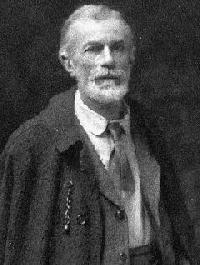 Edward Carpenter and Walter Crane were also members of the Socialist League, which reached a peak of 10,000 members in 1895, but came under anarchist influence, declined and was wound up in 1901. |
was editor of Justice and co-author with Bax of the New Catechism of Socialism, 1903/09. See Jean Longuet Archive. Edward Aveling (1849-1898) Londoner who married Eleanor Marx and made the first English translation of Capital; died soon afer Tussy's suicide. See also John Round’s attack on the socialists: The Coming Terror, 1881. See Review of “Forerunners of Socialism” by Henry W Macrosty, 1895.
|
| The Independent Labour Party What Happened at Leeds, Council of Workers and Soldiers Delegates, 1917. The United StatesSee Early American Marxism Archive. 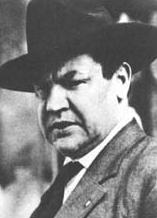 |
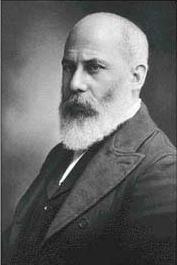 Daniel De Leon |
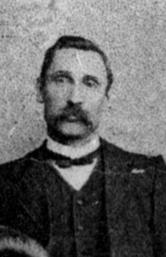
AustraliaBoth Hyndman's S.D.F. and later DeLeon's Socialist Labor Party found their reflections in Australia, but it was the visit of Tom Mann to the colony which led to the development of a Marxist Party, the Victorian Socialist Party. 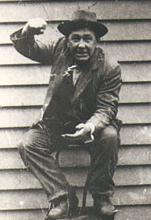 |
see link in title for original site
Note on the numbers below, subsequent investigation showed them to be extraordinarily much higher by several times as much. Communism like Nazism and Fascism, including current AmeriFascism, is a totalitarian tyranny of unbridled savagery.
Already famous throughout Europe, this international bestseller plumbs recently opened archives in the former Soviet bloc to reveal the actual, practical accomplishments of Communism around the world: terror, torture, famine, mass deportations, and massacres. Astonishing in the sheer detail it amasses, the book is the first comprehensive attempt to catalogue and analyze the crimes of Communism over seventy years.
"Revolutions, like trees, must be judged by their fruit," Ignazio Silone wrote, and this is the standard the authors apply to the Communist experience—in the China of "the Great Helmsman," Kim Il Sung’s Korea, Vietnam under "Uncle Ho" and Cuba under Castro, Ethiopia under Mengistu, Angola under Neto, and Afghanistan under Najibullah. The authors, all distinguished scholars based in Europe, document Communist crimes against humanity, but also crimes against national and universal culture, from Stalin’s destruction of hundreds of churches in Moscow to Ceausescu’s leveling of the historic heart of Bucharest to the widescale devastation visited on Chinese culture by Mao’s Red Guards.
As the death toll mounts—as many as 25 million in the former Soviet Union, 65 million in China, 1.7 million in Cambodia, and on and on—the authors systematically show how and why, wherever the millenarian ideology of Communism was established, it quickly led to crime, terror, and repression. An extraordinary accounting, this book amply documents the unparalleled position and significance of Communism in the hierarchy of violence that is the history of the twentieth century.